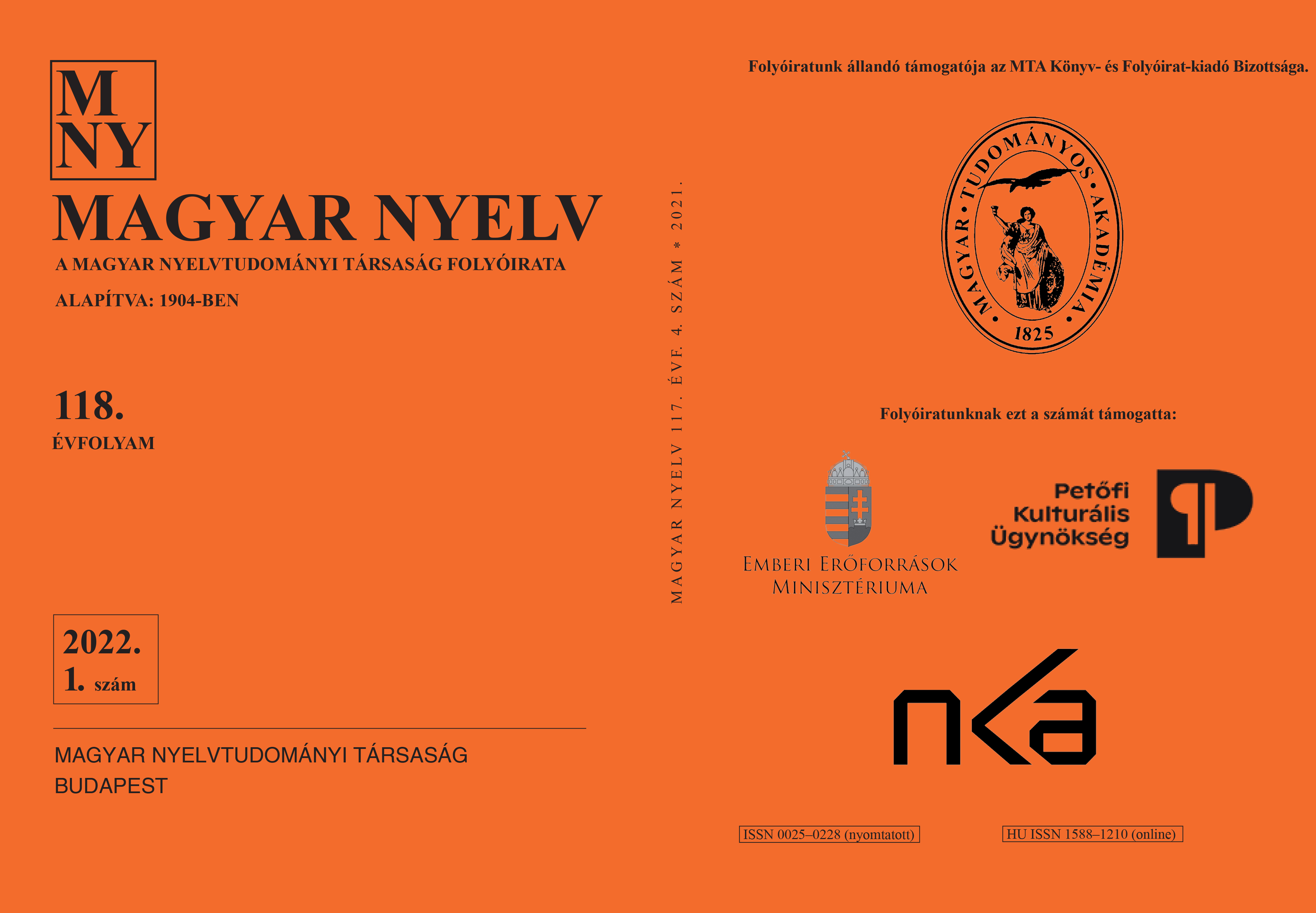Marek Stachowski: Kurzgefaßtes etymologisches Wörterbuch der türkischen Sprache
Abstract
A kötet szerzője Marek Stachowski lengyel turkológus-nyelvész, a krakkói Jagelló Egyetem professzora, szűkebb szakterülete a török szókészlet története, különös tekintettel az északkelet-szibériai, a török nyelvcsaládhoz tartozó jakut és dolgán, illetve a törökországi török nyelvekre. A szótár (a továbbiakban KEWT.) olyan munkának tekinthető, mely a szerző szakterületén foglalja össze röviden a tudomány állását. A KEWT. mindenképpen hiánypótló, hiszen kifejezetten a mai törökországi török nyelvre vonatkozó, teljes etimológiai szótár európai nyelven eddig nem volt elérhető. (Török nyelven l. Eren 1999. Tietze kétnyelvű szótára még nem készült el teljesen, l. Tietze 2002, 2009. A törökségi nyelvek etimológiai szótárirodalmának hosszú története van, l. többek között Radloff 1893–1911; Räsänen 1969; Sevortyan et al. eds. 1974; Starostin–Dybo–Mudrak 2003. A történeti török nyelvekhez l. Clauson 1972.)
Downloads
Published
Issue
Section
License
Magyar Nyelv is a Diamond Open Access periodical. Documents can be freely downloaded and duplicated in an electronic format, and can be used unchanged and with due reference to the original source. Such use must not serve commercial purposes. In the case of any form of dissemination and use, Hungarian Copyright Act LXXVI/1999 and related laws are to be observed. The electronic version of the journal is subject to the regulations of CC BY-NC-ND (Creative Commons – Attribution-NonCommercial-NoDerivatives).
The journal permits its authors, at no cost and without any temporal limitation, to make pre-print copies of their manuscripts publicly available via email or in their own homepage or that of their institution, or in either closed or free-for-all repositories of their institutions/universities, or other non-profit websites, in the form accepted by the journal editor for publication and even containing amendments on the basis of reviewers’ comments. When the authors publicize their papers in this manner, they have to warn their readers that the manuscript at hand is not the final published version of the work. Once the paper has been published in a printed or online form, the authors are allowed (and advised) to use that (post-print) version for the above purposes. In that case, they have to indicate the exact location and other data of the journal publication. The authors retain the copyright of their papers; however, in the case of an occasional secondary publication, the bibliographical data of the first publication have to be included.



